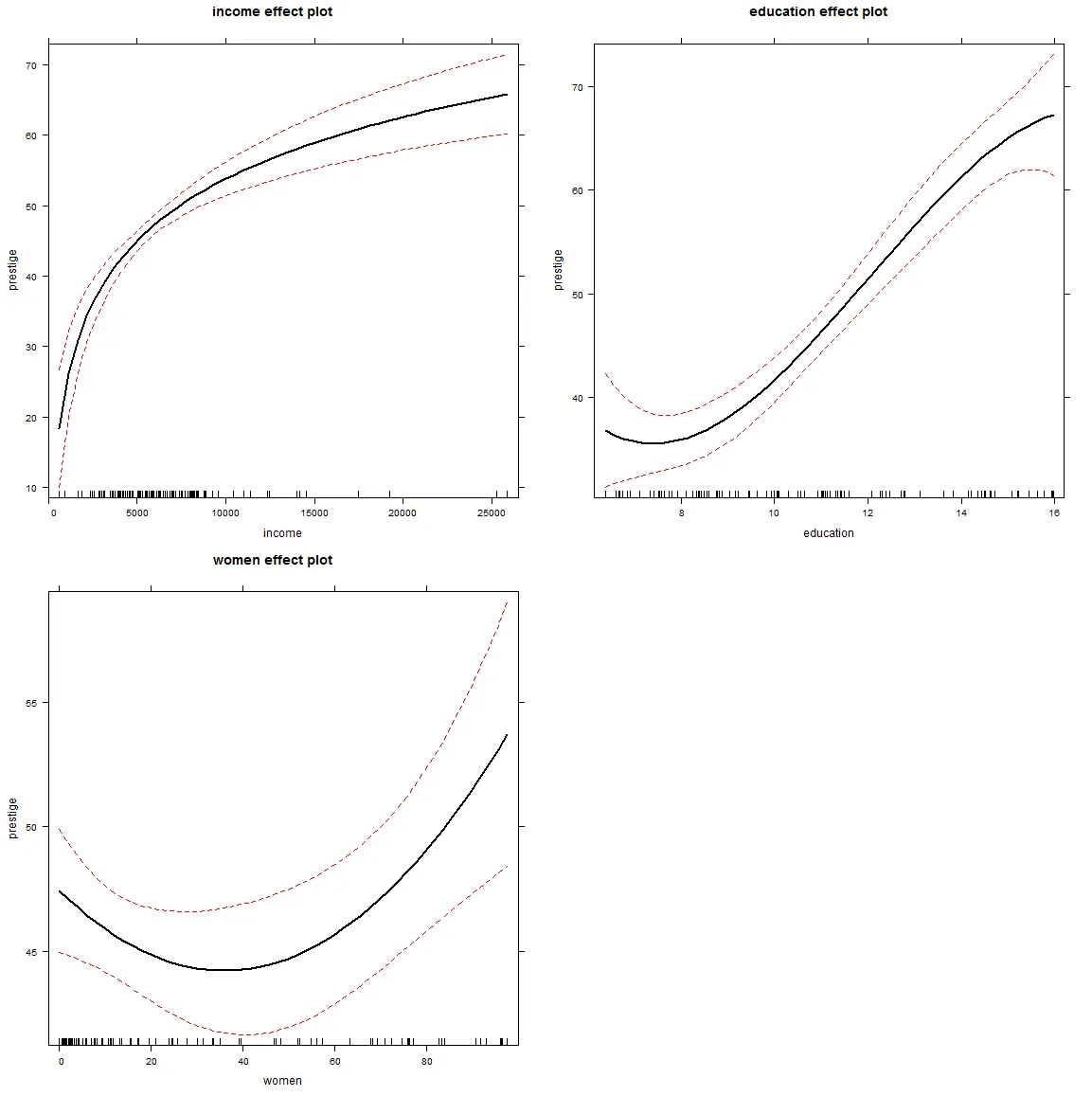二次项在回归中非常常见。以下是来自John Fox的一个例子(http://www.jstatsoft.org/v08/i15/paper)
library(car) # For data
library(splines) # For bs()
library(effects) # For plotting
data(Prestige)
prestige.mod <- lm(prestige ~ log(income) + bs(education, df=3) + poly(women, 2), data=Prestige)
summary(prestige.mod)
test <- plot(all.effects(prestige.mod, default.levels=50))

是否有R命令可以立即获取二次效应的最小/最大值,而无需手动推导/绘制它?